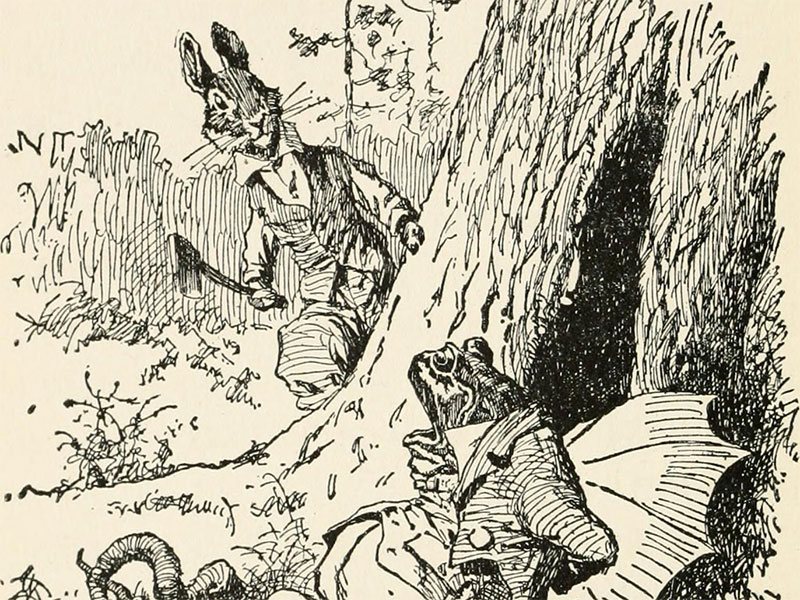
Humans have the capacity to imagine civilizations and creatures that have never existed, and our language reflects that ability. It would therefore be understandable if the stories we tell ourselves stretched beyond the bounds of local ecology. However, research has shown that many cultural artifacts and ideas are strongly affected by environmental factors.
Researchers in Japan wanted to know if the biogeography of a region could constrain motifs in animal folklore. To do this, they studied the distribution of animal trickster folklore against the distribution of the animal the folklore was based on, as well as several environmental factors. They “found that the distributions of real animals were restricted by climate conditions and that the presence of real animals restricted the distributions of trickster animals. In other words, climate conditions indirectly restrict the distribution of trickster animals in folklore. These results suggest that ecological factors could restrict the contents of folklore or, more broadly, human culture due to human cognitive biases,” said Shota Shibasaki, a researcher at the Center for Frontier Research, National Institute of Genetics, Mishima, Shizuoka Japan.
Their research was published on May 8th in the Royal Society Open Science.
The discussion on the links between the environment and cultural ideas has been going on for a long time, but the links between animal folklore and the environment has been understudied. Folklore could conceivably be free of any constraints, except perhaps the limits of human imagination. But what if there are limits on folklore? Biogeographical studies have found that climate conditions are amongst the dominant factors that determine the geographical spread of species. Could this hold true for the animal motifs in folklore?
“We hypothesized that (i) climate conditions regulate animal distribution in folklore as in nature, and (ii) there is an overlap in the distributions of real and trickster animals in folklore,” said Yo Nakawake, a researcher at Department of Social Psychology, Yasuda Women’s University, Asaminami, Hiroshima, Japan.
To test this hypothesis, the Japanese researchers looked at trickster animals using a database of folklore motifs collected from across the globe with geographical coordinates for each story. They also used two other databases that contained the distribution of the real animals and climate conditions for the regions being studied. They then classified the geographical areas into 9 different biomes that were defined by annual mean temperature and annual precipitation. Using these databases, they ran statistical analyses on the distribution of the folklore trickster animals as compared to the distribution of the real animal and the various biomes.
They found that the distribution of real animals was strongly linked to the environmental variables. They looked at the conditional probability of a trickster animal occurring if its real counterpart is present. If there is a high conditional probability found, it means that a native species is necessary for the trickster animal to occur. Of the 16 animals they looked at, 14 showed a high conditional probability, greater than 80%. This is strong evidence that the presence of the native animal is necessary for its trickster counterpart to occur.
“Given that the distributions of real animals are restricted by the annual mean temperature and annual precipitation, these climatic conditions indirectly affected the distribution of trickster animals. Our study, applying biogeographical methods to culture, paves the way to a deeper understanding of the interactions between ecology and culture,” said lecturer Ryosuke Nakadai of the Faculty of Environment and Information Sciences, Yokohama National University, Yokohama, Kanagawa, Japan.
When speaking of their future research, Nakadai said, “Human culture deeply relates to nature. Since we have been losing ties to nature for decades, our cultural diversity may decrease as biodiversity does. We want to continue research to understand the feedback between nature and culture, and to conserve both types of diversity.”


Leave a Reply